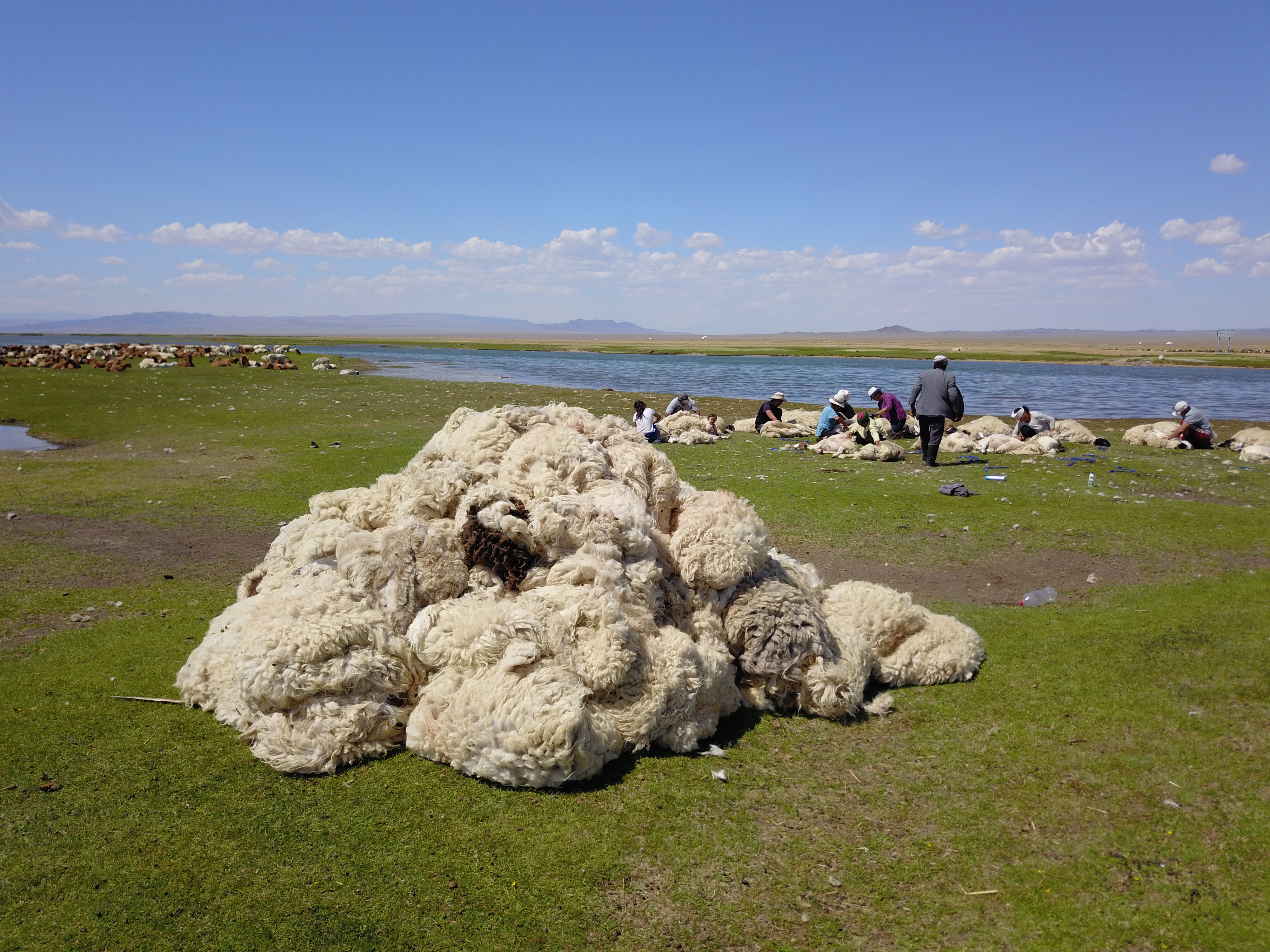Mongolian Herder’s Rise to Globally Acknowledged Wool Shearer
July 30, 2024
As of 2023, Mongolia is home to over 60 million animals, nearly half of which are sheep. This abundance translates to an impressive annual potential of approximately 40,000 tons of sheep wool production. However, this potential remains largely untapped due to current practices. The low market price of wool further complicates matters, posing significant challenges to improving the livelihoods of herders.
To address these issues and maximize the value of Mongolia's sheep, efforts are underway to enhance the quality of sheared hair and wool. By increasing the quality of these products, the unit value of sheep can be raised, potentially reducing the total number of animals and contributing to alleviating overgrazing issues while enhancing the livelihood and employment rate of herders.
UNDP with support from the Global Environmental Facility (GEF), introduced advanced wool shearing technology and initiated training courses to build the capacity of Mongolia's first globally certified wool shearers.
In the summer of 2022, the first free basic training course was organized for herders and cooperatives by wool shearer master teachers from New Zealand paving the way for select Mongolian herders to start their journey towards becoming certified wool shearers.
Enkh-Amgalan, one of the four herders in this training, embarked on a transformative journey. From the start, his leadership, diligence, and remarkable skills were evident. He seized the opportunity to participate in a three-month paid internship in New Zealand, where he significantly honed his skills, learning to shear more than 300 sheep in a day. Upon returning to Mongolia, he became a professional shearer and now aims to establish a team of certified wool shearers.
Traditional wool shearing with manual scissors has significant drawbacks, such as blistering hands, lower yields, higher time consumption, and requiring more labor. The best local wool shearer could shear up to 30 sheep daily, while the average stands at only 10-15. In contrast, using an electric shearer, one can easily shear more than 200 sheep daily. Advanced shearing and sorting technology also produces 30 percent more wool and helps create higher quality wool and wool products, benefiting manufacturers and consumers.
Enkh-Amgalan, participating in the wool shearing internship in New Zealand.
Upon arriving in New Zealand, Enkh-Amgalan realized that he needed to become an even more hardworking individual to succeed and master these crucial skills, alongside the diligent New Zealanders.
One of the significant outcomes of this initiative is the potential to create long-term jobs for herders and local communities in Mongolia supporting their livelihood. Herders’ ability to sort sheep wool according to quality and grade and sell it at different prices to national companies significantly boosts their income. The broader impact can be substantial for the future of the wool industry and herders' livelihoods in Mongolia.
Enkh-Amgalan is planning on forming a Mongolian team of professional shearers for short-term jobs abroad during the winter season when herders' income prospects are limited.
He says, “My biggest dream is to organize a sheep shearers' championship in my country to promote Mongolian talent to the world. To achieve this, we need more shearers. The immediate goal is to train 5-6 young people from the local area, form a team, and start shearing sheep and camels.”

Enkh-Amgalan riding a horse in New Zealand.
He noted that the annual income of a professional wool shearer can reach up to 80 million MNT /23,000 USD/. Additionally, he pointed out a global shortage of skilled shearers, particularly in New Zealand. This shortage has driven a 20-30 percent increase in wages for this work over the past three years, with salaries rising to as much as 65,000 USD per year. According to international trainers, there is potential to create approximately 4,000 seasonal wool shearing jobs in Mongolia.
In this way, the young Mongolian herders are embracing modern, advanced technology and creating new jobs with high market demand. They are laying the foundation for improving the value and production of wool, advancing the development and reforms of the wool industry and gaining global recognition for their talent in shearing.

Herders shearing wool in Mongolia.
Ms. Uranchimeg Tserendorj, Head of the Natural Resources Policy and Coordination Department of the Ministry of Environment and Climate Change, says, "The project, funded by the GEF and jointly implemented by us, aims to enhance traditional livestock husbandry in Mongolia by enhancing productivity and adding value. By introducing advanced techniques and technologies and developing the wool value chain, we are not only creating new jobs but also significantly improving the livelihoods of local communities. This initiative sets a benchmark for good practice by driving economic growth, aligning social development with ecological balance and protection, and fostering multilateral cooperation to achieve green development goals in line with our sectoral policies and missions."
***
About the Project and Intervention
UNDP’s "Ensuring Sustainability and Resilience of Green Landscapes in Mongolia (ENSURE)" project, is jointly implemented by the Ministry of Environment and Climate Change with a funding from the Global Environmental Facility (GEF), introduced advanced wool shearing technology and initiated training courses to build the capacity of Mongolia's first certified wool shearers.

 Locations
Locations












